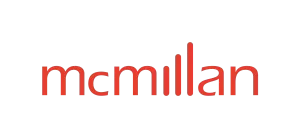- within International Law topic(s)
- in United States
- within Transport and Insolvency/Bankruptcy/Re-Structuring topic(s)
- with Senior Company Executives, HR and Finance and Tax Executives
- with readers working within the Accounting & Consultancy, Banking & Credit and Business & Consumer Services industries
Canada's trading relationship with the United States continues to evolve at a rapid pace. Recent developments include the increase in US tariffs on certain Canadian goods, and the imposition by Canada of a series of broad protective measures aimed at supporting domestic steel and aluminum industries.
Below, we examine each of these measures in detail, outlining the key changes and their implications.
Trump Administration Increases Rate of "Fentanyl" Tariffs on Canada
On August 1, 2025, the Trump Administration increased tariffs on Canadian imports from 25% to 35%, citing the alleged failure of Canada to stem the flow of illegal drugs, including fentanyl, across the border into the US, as well as Canada's retaliation to the initial 25% tariffs.
These Fentanyl tariffs continue to be imposed pursuant to the International Emergency Economic Powers Act, a United States federal law enacted in 1977. The use of the law to impose tariffs continues to be subject to appeals before US courts.
The Trump Administration initially signed the executive order implementing the 25% tariffs on Canada and Mexico on February 1, 2025, but after negotiations, delayed the tariffs from coming into effect until March 4, 2025. On March 6, 2025, the Trump Administration granted an exemption from the tariffs for goods that were compliant with the CUSMA free trade agreement.
Goods that qualify under CUSMA remain exempt from the US tariffs. In order to qualify for such preferential treatment, goods must meet the rules of origin requirements in CUSMA. It is difficult to accurately quantify what proportion of Canadian-origin exports to the US do (or could) qualify for CUSMA. Recent reports suggest a significant majority (e.g. 90%) of current exports qualify under CUSMA and are exempt from US Fentanyl tariffs.1
By contrast, the United States does not extend preferential treatment to goods subject to sector-specific tariffs imposed under Section 232 of the Trade Expansion Act of 1962. As a result, such goods remain subject to tariffs even when produced entirely within North America. To be sure, the Fentanyl tariffs are separate from the additional sector-specific tariffs that have been imposed under Section 232 of the Trade Expansion Act of 1962, which apply to steel, aluminum and copper products. Those sector specific tariffs apply regardless of CUSMA origin.
The Canadian Government is continuing to work toward an agreement with the US Administration to remove or reduce tariffs, despite not meeting the revised target date of August 1, 2025, for such a deal. Recent statements by Prime Minister Carney and President Trump have suggested that a trade deal with the US may not be imminent.2 It is not yet clear whether Canada intends to further increase its counter-tariffs on US goods. Canadian importers should be aware that Canada may do so, including potentially by increasing steel import tariffs to 50 percent to match the tariff currently imposed by the United States.
Tariffs on Canada as Part of a Larger US Tariff Package
In addition to the increase "Fentanyl" tariffs, there have been two other major developments regarding US tariffs.
First, on August 1, 2025, the Trump Administration announced sweeping tariffs on most of its trading partners, also under the authority of the IEEPA. The US Administration has coined these as "reciprocal" tariffs, and they are set to take effect on August 7, 2025. Many countries are rushing to conclude trade agreements with the US to reduce these tariff rates.3
Second, also on August 1, 2025, the Trump Administration also announced a 50% tariff on certain copper imports, citing national security concerns.4 These tariffs apply to Canada, and given that they are imposed pursuant to Section 232, they are also not subject to exemption under the CUSMA preferential treatment.
Canada Moves to Protect Domestic Steel Producers
Canada has recently unveiled a new tariff-rate quota ("TRQ") system on steel imports to Canada and announced that additional forthcoming tariffs on Chinese steel and aluminum in order to support Canadian steel and aluminum producers, as previously outlined in our recent bulletin. These TRQs were amended on July 31, 2025, and an additional surtax on Chinese melted and poured steel and on Chinese smelted and cast aluminum has also now been implemented.
Amendments to Canada's Steel TRQ Regime
On June 27, 2025, Canada issued an Order in Council (the "TRQ Order") that imposed TRQs on five categories of steel products (flat, long, pipe and tube, semi-finished, and stainless steel) from all countries that did not have a free-trade agreement ("FTA") with Canada.
Under this TRQ order, a 50% surtax would be applied on imports of covered steel products that exceed the specified quantity threshold from non-FTA countries. This quota was based on the total imports from 2024 for each product category. The TRQs were expressly implemented to address the risk of diversion of steel products into the Canadian market from countries whose steel exports are affected by restrictive trade measures taken by the United States.5 Put differently, Canada is seeking to protect its market from products diverted away from the United States, due to US tariffs.
On August 1, 2025, Canada amended the TRQ Order (the "TRQ Amendments"), now expanding the regime to also apply to countries with which Canada has a free trade agreement (with the exception of the United States and Mexico, which remain exempt). The tariff that applies once the quota is reached is also 50%.
The TRQ Amendments also amended the non-FTA TRQ to reduce by half the eligible quota. As a result, the non-FTA TRQ quota is now set at 50% of 2024 volumes, assessed and applied quarterly. While the original TRQ Order allowed unused portions of quarterly TRQ amounts to be carried forward into the next quarter, the TRQ Amendments remove this possibility.
The TRQ Amendments also change how the quota is allocated between different steel products. Whereas the original TRQ Order had five broad categories of goods subject to TRQs, the TRQ Amendments now set out a more granular set of 23 categories of steel products that each have a separate TRQ. This applies for both the FTA TRQ and the non-FTA TRQ.
CBSA has published Customs Notice 25-24 outlining how the TRQ Order and Amendments will be implemented, including accounting requirements, clarifications on value for duty calculations, and the required form of proof of origin documentation (e.g. a commercial invoice or a Canada Customs Invoice).
The TRQ Amendments provide that the 50% surtax applied to steel imports in excess of the volume of a country's TRQ will not be added on top of other applicable surtaxes, only the TRQ surtax will apply. In other words, steel surtaxes do not "stack" on top of each other.
Surtax on Chinese Melted and Poured Steel and Smelted and Cast Aluminum
As a further measure to protect Canada's domestic steel and aluminum industries, as of July 31, 2025, Canada has imposed duties on steel melted and poured in China, as well as aluminum smelted and cast in China. This means that a large number of steel and aluminum products will now be subject to a new tariff if they are made from raw steel or raw aluminum products from China. For example, line pipe manufactured in Korea using Chinese steel would now be subject to a 25% tariff into Canada.
The Steel Goods and Aluminum Goods Surtax Order ("Chinese Steel and Aluminum Order") provides for:
- 25% surtax on steel goods imported into Canada that contain steel melted and poured in China. The Chinese Steel and Aluminum Order specifies that "goods contain steel melted and poured in China if the raw steel, or any portion of the raw steel, contained in the goods was first produced in a liquid state in a steel-making furnace and poured into its first solid state (which can take the form of a semi-finished or finished steel mill product) in China."
- 25% surtax on aluminum goods that contain aluminum smelted and cast in China. The Chinese Steel and Aluminum Order specifies that goods contain aluminum smelted and cast in China if: the largest or second largest volume of primary aluminum contained in the goods was produced in China; or the aluminum contained in the goods was most recently liquified and cast into a solid state (which can take the form of a semi-finished or finished aluminum product) in China.
The specific list of products subject to the Chinese steel and aluminum surtaxes are listed by HS code and set out in the Schedule to the Chinese Steel and Aluminum Order. This Schedule covers a broad range of steel and aluminum products, ranging from steel and aluminum ingots to steel line pipe and aluminum pipe fittings.
Importantly, these surtaxes on steel and aluminum products will apply where the importer does not or cannot show that the steel or aluminum products being imported into Canada do not contain steel that was melted and poured in China or aluminum smelted and cast in China. This effectively creates a reverse onus on foreign exporters (and their Canadian importers) to demonstrate that their Canadian imported goods are made from steel or aluminum that does not first stem from China.
CBSA has published Customs Notice 25-28 that provides information on how the Chinese Steel and Aluminum Order will be administered, including proof of origin requirements, surtax calculations, exceptions and accounting requirements.
Key Takeaways
The Canadian tariff environment is undergoing rapid and significant change. Escalating US tariffs on Canadian exports, without a clear path to relief under any prospective agreement with the Trump Administration, are poised to cause material disruptions for Canadian exporters and may lead to a substantial reconfiguration of Canada's trade flows.
Canadian steel and aluminum producers are likely to face a transformed commercial environment. Many may (or may already have) slowed exports to the US market and seek to increase their domestic footprint by leveraging new protections, including tariff rate quotas (TRQs) and additional surtaxes on Chinese-origin steel and aluminum. At the same time, Canadian manufacturers and construction firms that rely on imported steel may be forced to seek alternative or diversified suppliers where sourcing from China or other TRQ-affected countries is no longer economically viable to the same extent.
Businesses facing material impacts from these tariff shifts should seek advice from international trade counsel to assess the legal implications and develop strategies to mitigate exposure. McMillan's International Trade Group, the largest dedicated practice of its kind in Canada, stands ready to assist clients with all facets of international trade law, including trade compliance, tariff planning, and regulatory advocacy (such as remission requests).
Footnotes
2. https://www.nytimes.com/2025/07/22/world/canada/carney-trade-deal-trump.html; https://www.cbc.ca/news/politics/us-canada-trade-deal-tariff-1.7593904.
3. https://www.cbc.ca/news/world/trump-tariffs-south-korea-1.7598259.
4. https://www.cbc.ca/news/business/copper-tariff-1.7597650.
5. TRQ Order, https://gazette.gc.ca/rp-pr/p2/2025/2025-07-16/html/sor-dors148-eng.html (see Regulatory Impact Analysis Statement).
The foregoing provides only an overview and does not constitute legal advice. Readers are cautioned against making any decisions based on this material alone. Rather, specific legal advice should be obtained.
© McMillan LLP 2025











